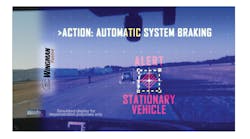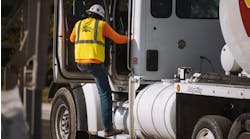LOUISVILLE, KY. There are over 100,000 Bendix Wingman collision mitigation systems installed in trucks today, and if you count the company’s older Vorad warning system, the number of forward collision warning systems on the road in trucks climbs to 240,000. Last year Navistar made the Wingman Advanced system standard on its linehaul tractors, and at the Mid America Trucking Show this week both Kenworth and Peterbilt announced that they were adding the system as standard equipment on their linehaul trucks.
The reason so many fleets have adopted collision mitigation is that they find that it works, reporting large decreases in rear-end collisions, according to Fred Andersky, dir. of customer solutions, controls. Some have seen as much as a 90% drop in rear-end collisions and a corresponding decrease in severity for the remaining 10%, he said.
And now the company’s most advanced system – Wingman Fusion – has been experiencing an even faster adoption rate since its introduction in 2015, he said at a press conference during MATS.
Fusion, which combines camera and radar sensors to better identify potential collision risks, enables even faster braking intervention while also preventing rollovers and stability events. But more importantly according to Andersky is that it’s underlying technology is the foundation for future driver assistance systems, eventually leading to more autonomous driving functions.
“We’re working on the next generation of sensor right now,” he said. “They’re even faster and more accurate, will have fewer false alerts and bring more effective integration with features like blind spot detection.”
And that next generation may have one feature that could be a game changer – it may be available as a retrofit for older trucks as soon as the end of this year.
“Information and intervention go hand in hand,” Andersky said. “These are the foundations for tomorrow’s advanced technologies. The driver will still remain the key, and we won’t get to fully autonomous trucks for a long, long time, but we have a roadmap now.”



